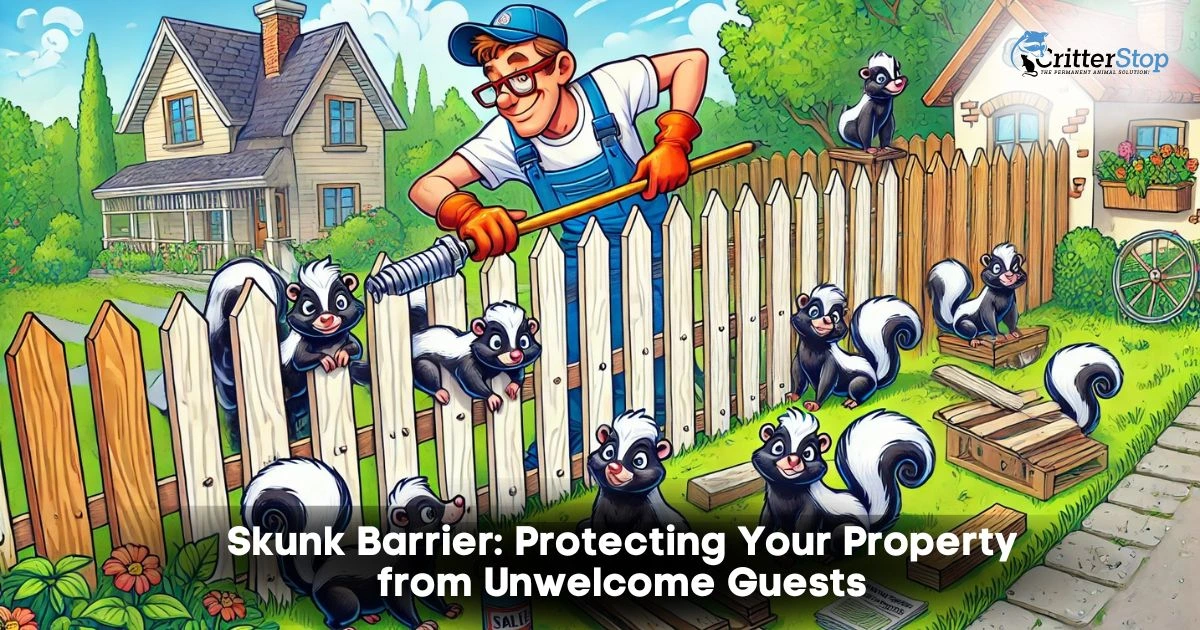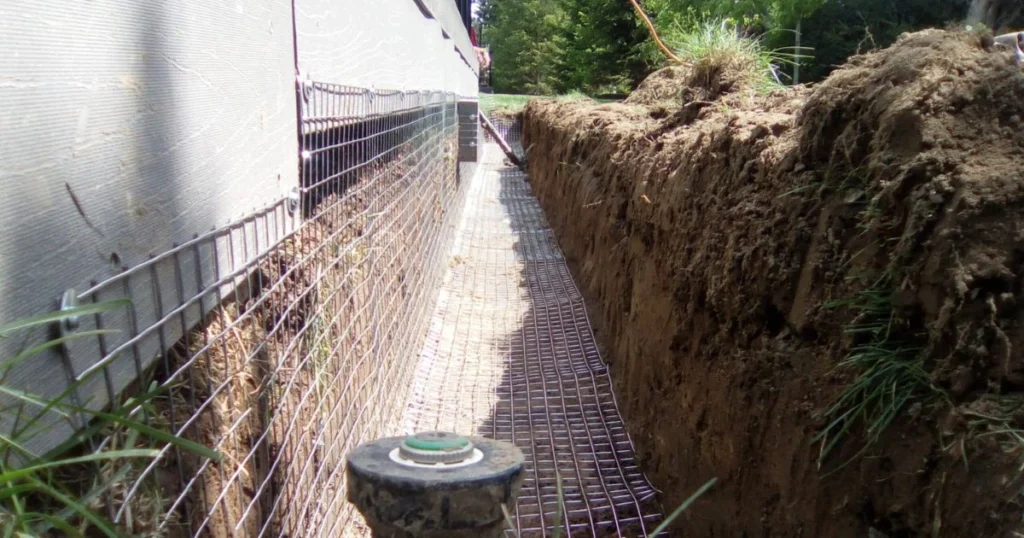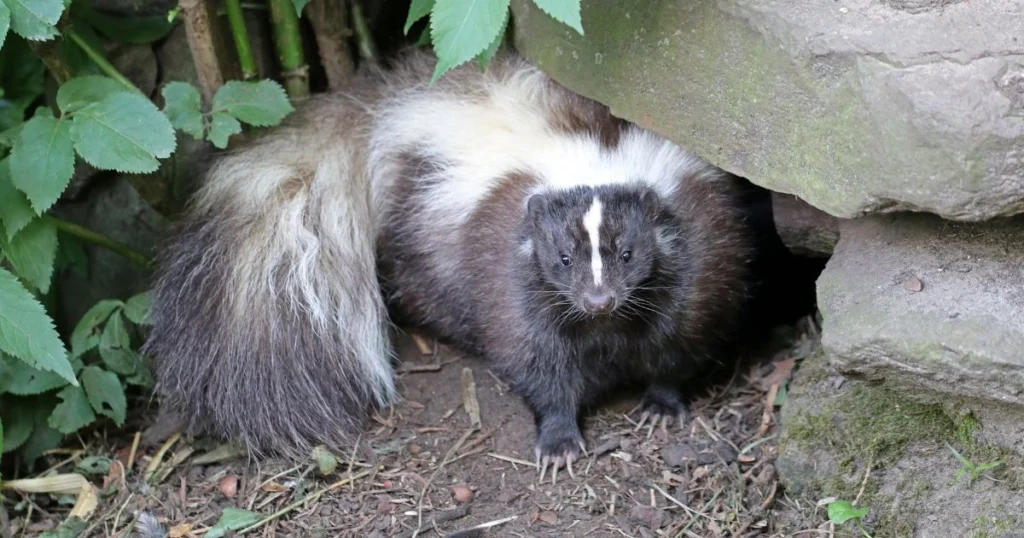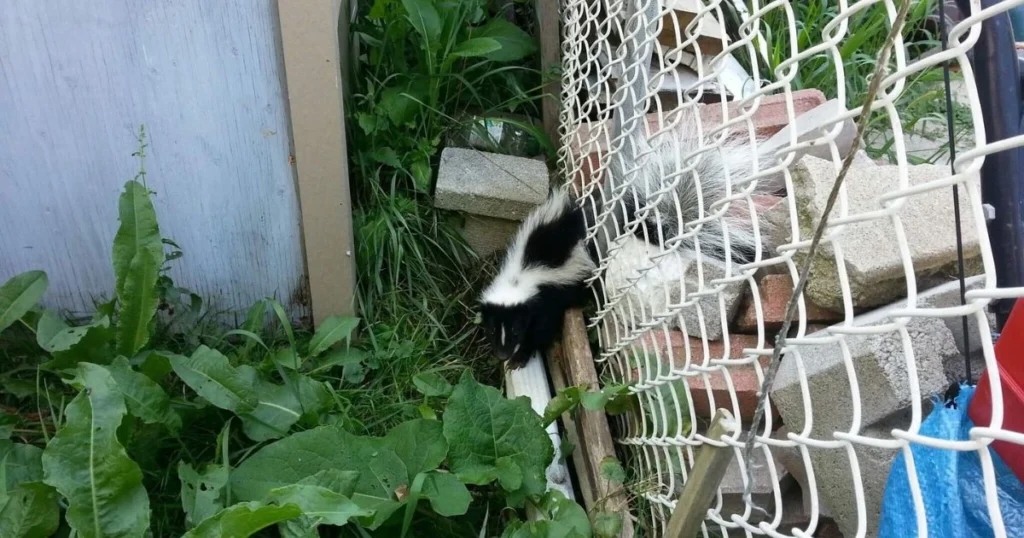
Skunks are known for their distinctive appearance and, of course, their notorious spray. While they play an important role in the ecosystem, skunks can become a nuisance when encroaching on human properties. Implementing a skunk barrier is one of the most effective ways to keep these animals at bay. In this article, we’ll explore what skunk barriers are, why they’re important, and how they work, and we will provide you with a step-by-step guide to installing one. By the end, you’ll have a comprehensive understanding of how to protect your property effectively.

Skunks may seem harmless at first glance, but their presence can lead to several issues:
Given these concerns, creating a skunk barrier is a proactive solution to avoid unwanted interactions.
A skunk barrier is a physical obstruction designed to prevent skunks from entering specific areas of your property, such as beneath decks, sheds, or garden beds. These barriers are typically constructed using durable materials like hardware cloth, welded wire mesh, or concrete and are installed to extend underground to deter burrowing.
Skunk barriers are an environmentally friendly and humane method of pest control. They work by addressing the root cause of the problem: restricting access to areas where skunks are likely to settle or forage.

Implementing a skunk barrier offers numerous advantages:
To build an effective skunk barrier, gather the following materials:

Inspect your property for potential entry points, such as gaps beneath decks, sheds, or fences. Skunks are excellent diggers, so focus on areas where burrowing is likely.
Dig a trench around the perimeter of the area you want to protect. The trench should be at least 12–18 inches deep and 6–8 inches wide to deter skunks from burrowing underneath.
Place hardware cloth or welded wire mesh into the trench. Ensure the bottom edge of the mesh curves outward in an “L” shape to make digging under the barrier more difficult.
Attach the top edge of the mesh to the structure (e.g., deck posts or shed base) using a staple gun, screws, or other fasteners. This ensures the barrier remains securely in place.
Cover the buried portion of the barrier with soil, packing it firmly to eliminate gaps. This step prevents skunks from finding a way through.
Periodically check the barrier for damage or weak spots. Repair any issues promptly to maintain its effectiveness.

While installing a skunk barrier yourself can save money, there are instances where hiring a professional is the better choice:

If you’re dealing with persistent skunk issues or need assistance with installation, contact a professional wildlife removal company like Critter Stop. Critter Stop specializes in humane wildlife removal and prevention, including the installation of skunk barriers. With its excellent reputation for high-quality work and outstanding customer service, Critter Stop ensures your property is safe and skunk-free.
Call Critter Stop today at (214) 234-2616 to schedule a free inspection. Their expert team is ready to help you secure your property and keep unwanted wildlife at bay.
A skunk barrier is a smart investment for any homeowner seeking to protect their property from skunk-related damage and health risks. By following the steps outlined above or enlisting the help of professionals like Critter Stop, you can enjoy peace of mind knowing your home is safeguarded. Don’t let skunks disrupt your life—act now to create a barrier that lasts for years to come.
Skunks can cause significant issues on your property, from digging up your yard to leaving behind unpleasant odors. A skunk barrier or skunk fence is an effective and humane solution to keep these unwelcome guests at bay. Below, we answer some common questions about skunk barriers and fences to help you protect your property.
When installed correctly, a skunk barrier can be highly effective. It prevents skunks from digging under fences and entering your property.
The best materials for a skunk fence include sturdy wire mesh or hardware cloth, buried at least 12 inches into the ground to prevent digging.
You can add a skunk barrier to an existing fence by attaching hardware cloth or mesh along the base and burying it to prevent skunks from burrowing.
Regular maintenance includes checking for gaps, repairing any damage, and ensuring the buried portion of the fence remains intact to effectively block skunks.
Yes, a well-constructed skunk barrier can also deter other digging animals, such as raccoons, opossums, and groundhogs, from entering your property.
Skunk fences are humane and eco-friendly, as they deter skunks without harming them or affecting the surrounding environment.
The cost of installing a skunk barrier depends on the size of your property and the materials used, but it is typically a cost-effective solution for long-term pest control.
Visit our Critter Library and learn more about our furry friends